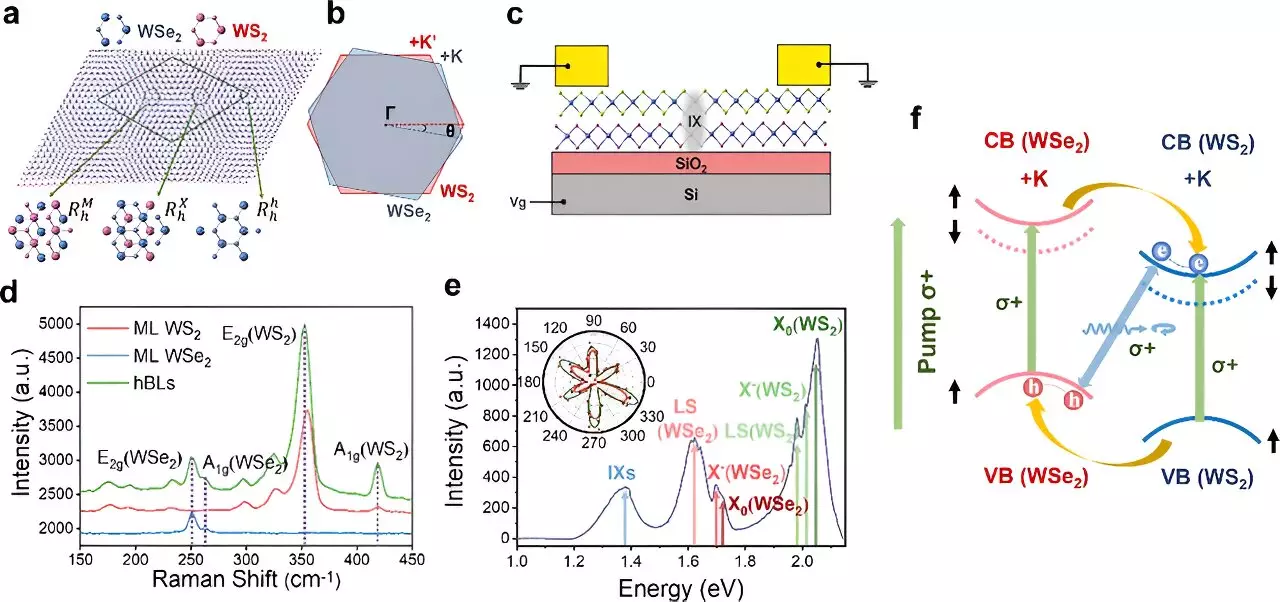Valley polarization switching and polarization degree in transition metal dichalcogenide heterobilayers (hBLs) have been shown to depend on the moiré period through twist engineering. This method of manipulating the valley degrees of freedom of interlayer excitons (IXs) is crucial for controlling the excitonic potential and ultimately improving the controllability of valley properties.
Researchers have discovered that valley polarization of IXs can be effectively controlled by adjusting the twist angle in fabricated WSe2/WS2 heterostructure devices with different moiré periods. The twist angle leads to a nanoscale periodic potential, affecting the excitonic potential and valley polarization. The degree of circular polarization (DCP) and polarization switching are both electrically controlled based on the moiré period.
The study delves into the physical mechanisms of twist angle-dependent DCP, looking at both intralayer and interlayer perspectives. A larger moiré period leads to a lower interlayer excitonic potential, confining more excitons and enhancing DCP. Additionally, an increase in intralayer electron-hole (e-h) exchange interactions results in a decrease in intralayer valley lifetime and a reduction in interlayer valley polarization. Theoretical calculations show that the excitonic potential difference between two minima increases with the twist angle, requiring a higher external bias for devices with a larger twist angle to switch the polarization.
Researchers have demonstrated a valley-addressable encoding device based on polarization switching, offering a platform for future non-volatile memories. This innovative approach showcases the potential for valleytronic devices in optoelectronic applications.
The findings of this study shed light on the significance of twist engineering in controlling valley polarization switching in transition metal dichalcogenide heterobilayers. The ability to manipulate the excitonic potential and polarization degree through twist angle adjustments opens up new possibilities for the development of advanced valleytronic devices. Further research in this area could lead to the creation of even more sophisticated optoelectronic applications and non-volatile memory systems.


Leave a Reply
You must be logged in to post a comment.